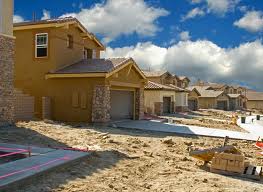
The worldwide economy is shaky at best. In fact, there are more doomsday predictions about total economic collapse out there right now than there are about any other subject. So who do you believe, and what could make the world a more stable place to live economically speaking.
When you set aside the EU problems with government debt, the slowdown in Chinese manufacturing, unrest in the Middle East and chaos in South America and Africa, all you have left is the U.S. economy; the largest economy in the world for both consumption and production. Yet, the U.S. continues to struggle with high unemployment, low manufacturing data and soaring prices for the average consumer.
So Where Does the Problem Lay?
The United States has always relied upon the housing market to pull it up from a recession. Throughout history, when times were tough, the construction industry pulled the weight of the other lacking industries. However, the housing construction industry has not been able to contribute to the overall growth of the country for six of the last seven years. It is only in 2012 that home construction has begun to show signs of life.
In a recent article released by Reuters, 35 of the top 38 economists in the country believe that the housing industry is finally beginning to return, and that the home construction industry will actually contribute to the GDP figures this year.
When home construction occurs, jobs are created, support businesses see an increase in demand, and government generates considerable revenue. In fact, the Government Accounting Office has stated that each new home built creates at least $90,000 in overall revenue for government entities.
The other problem is the large amount of homes available on the market today at extraordinary low prices. Because home values have dropped so much, and there are too many homes available, the desire to purchase is absent.
While it would be normal to think that low prices would drive demand, the opposite is true. People see home values dropping and do not want to take the risk that if they purchase a home now it will be worth less next month. When people see home prices continue to rise, they will interpret that as “time to buy” before prices go too high.
Other Contributing Factors
High unemployment rates are also a large cause of the housing industry problems and the overall economic downturn. Unemployment has remained over eight percent for several years, and people are simply afraid to commit to purchasing a home because they do not know what tomorrow will bring with their employment.
Unemployment, once you factor in the reported rate of 8.3 percent, and the additional six percent that are no longer looking for work, you have a population that is almost 15 percent unemployed. When you combine this figure with the amount of retirees, students and people receiving disability compensation that are out there, the number becomes closer to 25 percent. That is nearly one-quarter of the country not earning a living, consuming goods to boost the economy, or purchasing real estate.
What Can Be Done?
For the economy to heal in the United States, and around the world, a serious look must be taken at government debt burdens, the way commodities are traded and educational opportunities.
The people must begin to educate themselves to compete in the new millennium. Once they can return to work, they will become consumers again. Once they feel safe, they will begin to purchase homes and other goods and the economy will heal.
Authors Bio: Brent Wayne is a 23 years old housing and finance writer. He mostly spends his time writing blog posts and editorials for his personal finance blog. In his free time he likes to play Xbox 360 and enjoys reading books and hanging out with his friends.



